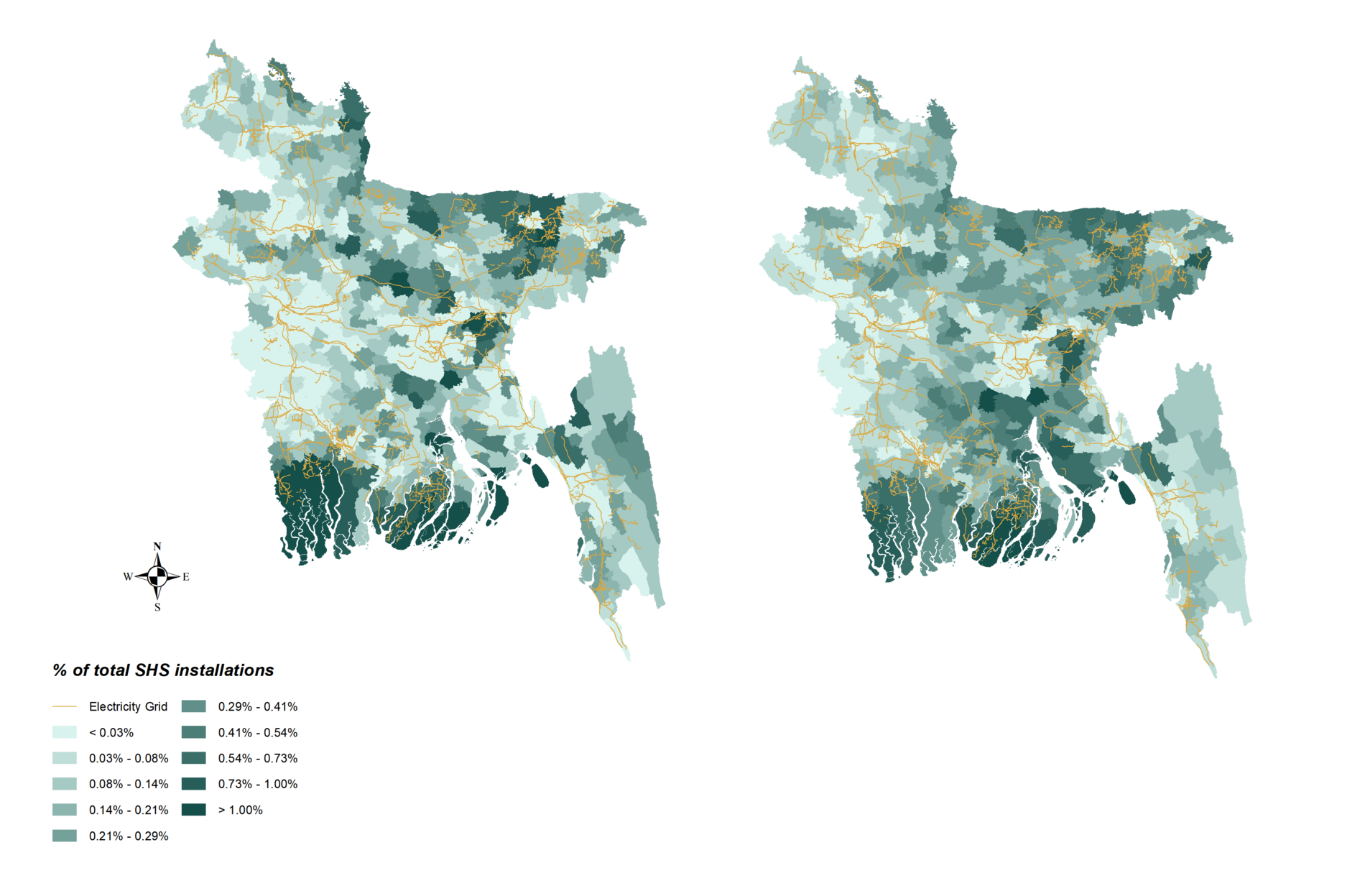The impact of supply structure on solar home system installations in rural off-grid areas
Published in Environmental Innovation and Societal Transitions, 2021
Achieving universal access to electricity (UN SDG 7.1.1) remains a major challenge, with about 671 million people—mostly in rural off‑grid areas—still lacking power. Extending grid infrastructure to remote villages is often prohibitively expensive. Distributed solutions, especially solar home systems (SHS), offer a cost‑effective means of providing lighting and basic energy services. Many off‑grid programs in South Asia and Africa have adopted market-based approaches that combine consumer financing, subsidies, and capacity-building support to develop local SHS markets.
However, the success and sustainability of these programs depend on the maturity and competitiveness of rural off‑grid energy markets. High distribution costs, low energy demand, and high upfront investments often deter new firms, leading to concentrated markets dominated by few players. Limited competition can result in higher prices, restrictive financing terms, and lower service quality—disproportionately affecting poor households.

This study is the first empirical investigation into how supply structure and market concentration influence the diffusion of SHS in rural off‑grid contexts. Using detailed data on over 4.11 million SHS installed under Bangladesh’s IDCOL program (2003–2017) across 503 markets and 60 active solar service providers, we measure market concentration using a normalized Herfindahl‑Hirschman Index. Employing Poisson fixed‑effects models estimated via Poisson Pseudo‑Maximum Likelihood (PPML), we analyze how changes in competition affect SHS adoption, capacity installed, system size, and customer segments.
Our results show that market competition plays a critical role in expanding SHS adoption. More competitive markets tend to see higher installation rates and greater diversity in products and services. Yet, simply increasing the number of firms does not automatically boost competition if market shares remain highly uneven.
Policy implications:
Rural SHS dissemination policies must actively address market concentration and ensure healthy competition.
Subsidies remain essential to make SHS affordable for poor households while supporting viable commercial markets.
Market development strategies should focus not only on increasing firm entry but also on reducing dominance by a few large players.
By linking market structure to the pace of sustainable energy transitions, this study offers evidence-based guidance for policymakers and donors aiming to achieve universal electrification through competitive, inclusive off‑grid solar markets.